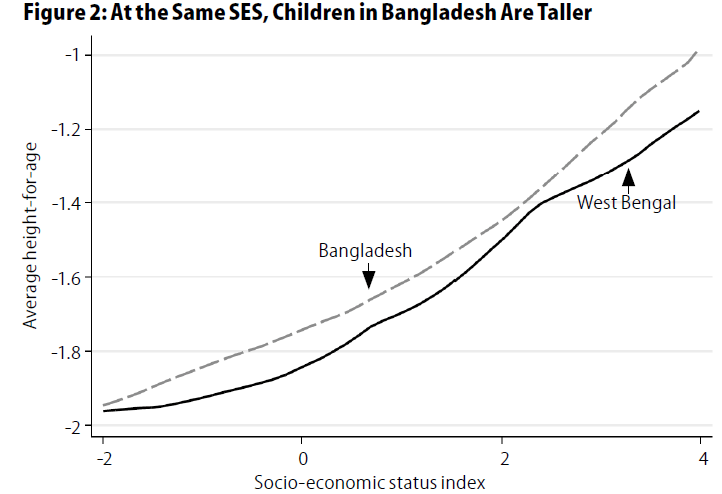Read Rukmini S's "The partition of India and height"
— Blog Post — 1 min read
Next week's issue of EPW will include an article on what comparing children in Bangladesh with children in the neighboring Indian state of West Bengal can tell us about the determinants of child height. Written by Arabinda Ghosh, Aashish Gupta, and me, we ask "Are children in West Bengal shorter than children in Bangladesh?" It turns out the simplest answer is no -- and it would be surprising if it were yes, because people in West Bengal are much richer, on average, than people in Bangladesh. However, at the same level of socio-economic status children in Bangladesh are importantly taller! That means that there is something other than money that is having a positive effect in Bangladesh. We show that differences in open defecation (which is much less common in Bangladesh than in India) and in female literacy (which is also much better in Bangladesh) can completely statistically account for the gap.
This inspired some interesting reflections by Rukmini in her Datadelve blog at The Hindu. She asks a striking question: "are people who the historical accident of Partition placed on the Indian side of the border better off because they’re richer and slightly taller? Or are those who ended up in Bangladesh better off because even though poorer on average, their health indicators are better than those equally poor across the border?" Of course both health and wealth are parts of a good life, and this is an important reminder that we cannot presume that the policies that promote economic development are always going to be the quickest way to human development.
The good news is that we need not think about persistent stunting as inevitable. History has made that clear: when infant mortality rates went down in Europe's historical development, children got taller. When Korea's north and south diverged in human development, average height did, too. So, it is no surprise that environmental differences also shape average population height here in South Asia. Perhaps, if India followed Bangladesh's sanitary lead, we could measure results by measuring children.
